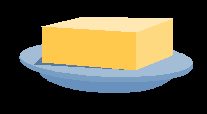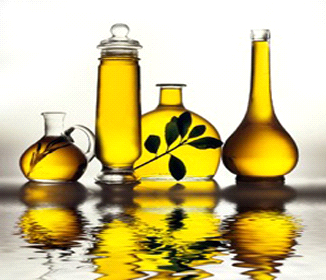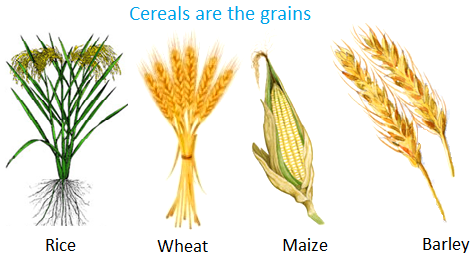Ingredient Substitutions
REPLACING EGGS

Most plant based newbies are surprised to learn that cooking and baking can easily be accomplished without eggs. Yes, those little yellow-eyed globs of cholesterol create heavenly baked goods and confections. When we bake, it’s the egg that binds, creates cohesiveness and gives oomph to a recipe. What shall we do without them? Try the following and be pleasantly surprised. Your arteries will shout, “Thank you!”
Ground Flaxseeds:
1 T flaxseeds plus 3 T water. Grind the seeds in coffee grinder or buy ground flaxseeds. (Store in refrigerator or freezer as they are highly perishable.) When beaten with warm water, the flaxseeds become gel-like. Flaxseeds work best and very well in pancakes and whole grain items. Flax give us all important omega-3 fatty acids. Just 2 T/day of ground flax provides the necessary omega-3.
¼ Cup Silken Tofu:
Use Extra firm silken tofu; blended = 1 egg. Beat in blender till creamy. Mix wet ingredients into tofu to get it to blend just right. Works best in dense cakes & brownies. (If recipe calls for 3 eggs, use only 2 tofu eggs.) In cookie recipes, may make cookies more cake-like and fluffy, so add 1 tsp starch (arrowroot or cornstarch) to recipe. Not too terrific in pancakes!
Ener-G Egg Replacer:
Is a combination of potato and tapioca starch, leavening agents and other ingredients; it is gluten, soy, dairy, and wheat free. For use, follow the directions on package.
1 ½ T Ener-G + 2 T very warm water mixed well = 1 egg. Works best in cookies or things that are supposed to be a little crispy. Resembles egg whites when beaten. Can be purchased at Whole Foods or other natural food markets. Ener-G Egg Replacer (can be purchased at health food store):
Bananas:
½ banana mashed very well = 1 egg. This works wonders as an egg replacer in baking. They hold air bubbles well, make recipes nice and moist, and give added flavor. Works best in quick breads, muffins, cakes, pancakes. Make sure you use ripe bananas that are just starting to turn brown.
Soy Yogurt:
¼ cp soy yogurt = 1 egg. This works a lot like beaten tofu, making recipes moist and tasty. Works best in breads, muffins and cakes.
Applesauce
3T = 1 egg.
Chia Seeds:
Are a lot like flaxseeds, but they even have a more 'gel'-like texture, and they have no added taste. You do not have to grind chia seeds to obtain their healthy lignans. Mix 1 T chia seeds with 1/4 cup warm water; allow it to sit a few minutes to gel. Walla, a wonderful egg replacer.
Cornstarch:
2 T can be added to dry ingredients to replace one egg when making heavier cakes, like quick breads and pound cake.
REPLACING MILK

Give up the cows! Instead try using low fat soy, rice, oat, hemp or almond milks. These non-dairy milks are now fortified with Vitamin D and Calcium. See which suits your fancy. If a recipe calls for buttermilk, add 1 tsp of apple cider vinegar or lemon juice to your milk substitute, and let it sit for a couple minutes, and walla, you have the perfect buttermilk without the fat and cholesterol. If you can’t find low fat soy, mix soy milk and water in half and half proportions to reduce fat content. Also, non-dairy milks come in plain and vanilla flavors. Often, I use the vanilla flavored milks in desserts, pancakes and smoothies. Read "The China Study" by Professor T. Colin Campbell to learn why no one after the age of two requires dairy. It is toxic, plain and simple!
REPLACING BUTTER

For butter lovers, this is a tough one. However, butter is so much easier to give up when you understand its high saturated fat content, and dastardly contribution to heart disease. But remember, each of the following contains fat, too, so go easy when you spread or avoid altogether!
Instead try the following non-dairy butter substitutes:
Earth Balance vegan non-dairy margarine
Smart Balance makes a vegan spread (not in all super markets)
Nut butters (made from almonds, cashews, soy or other nuts)
REPLACING OILS

There are varying opinions about using oil. Dr. John McDougall, Dr. Caldwell Esselstyn, and Dr. Michael Klaper strongly recommend avoiding oils altogether. Macrobiotic chefs allow use of certain oils. The best of the worst are extra virgin, cold-pressed olive oil and canola oil.
Personally, I cook without oil, using only the barest spritzes when absolutely necessary. Sautéing can be done using water, wine, veggie broth, Braggs liquid aminos or coconut aminos. Veggies sauté just as well without the oil and taste better, too. Your arteries will thank you. Note: There is NO nutritional value in oils – just fat!! In 1 tablespoon you have a whopping 120 calories, 9 grams of which are fat. And you know where the fat goes, don’t you?
REPLACING WHITE FLOUR
Colorful unrefined flours should replace the refined, white flours most often used in the western diet. Many non-wheat flours can be combined in recipes for those who are gluten intolerant.
Spelt – makes recipes heavier; good used in baking bread and overall baking. Increase baking powder.
Corn
Millet – dry and coarse.
Potato
Kamut – good for bread and baking; best if used half and half with other flours.
Soy – has strong flavor
Chickpea – also strong flavor.
Barley – for pancakes and cookies.
Buckwheat – great in pancakes but use half and half with other flours.
Oat – for breads and cookies.
Brown rice flour
Whole Wheat & Whole Wheat Pastry Flour - good old standbys. Great for baking!
REPLACING CHEESE

When I morphed to a plant based lifestyle, cheese was the hardest delicacy to delete from my eating repertoire. I loved my cheeses – Brie, Manchego, Provolone, Gouda, Havarti, and, even, Low Fat Laughing Cow.
I’m happy to say that I found gold in creating some of my own using cashews, agar and tofu. Good news is that over the past fifteen years a wide variety of plant based cheeses are now available in whole foods, organic, and natural food stores. It seems that every few months another manufacturer brings a new non-dairy cheese to market. Heidi Ho, Chao, Follow Your Heart, Kite Hill, Tree Nut Cheese, and Daiya are names you'll find on grocery shelves. Jo Stepaniak's "Uncheese Cookbook" presents a wealth of recipes for easily making your own uncheese. Many of these cheeses melt well and can be used in any recipe that calls for cheese.
REPLACING SUGAR 
Listed below are alternatives to typical white sugar. And stay clear of Splenda and Aspartame- not good for you! According to Dr. Michael Greger, M.D. & Ph.D., (NutritionFacts.org) the jury is still out on Stevia. More research is needed to assess if this substitute is Ok, bad or indifferent. Will keep you informed.
VIP: When using liquid sweetener, cut back a wee bit on other liquids in the recipe. I’ve learned that the hard way.
Maple syrup
Agave nectar
Honey
Organic Cane sugar
Sucanat
Date sugar
Barley malt
Date sugar
Molasses
Fruit juice concentrates
Brown Rice Syrup
Stevia – available in health food stores; a little goes a long way.







